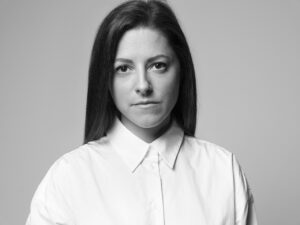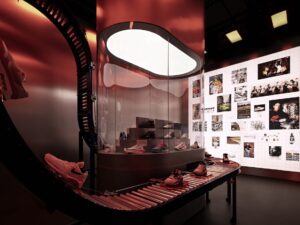What inspired the Kånken Re-Wool?
Wool has always been one of Fjallraven’s core materials. But like most outdoor brands, we used it to craft base layers and sweaters. A few seasons ago, we decided to try using wool in different ways – such as in jacket padding and to create a molded backpack backplate – and because we were so pleased with these results, we brought wool to one of our most popular series: Kånken .
Wool is a very functional and durable material, and when we were able to use recycled wool, it felt like a perfect match to our needs – both using functional materials, and re-using materials that are already out there at the same time.
I saw that the wool used for your latest Kånken Re-Wool backpacks is traceable. Where exactly is the wool from?
That recycled wool story is pretty special. Known as Re-Wool at Fjällräven, this recycled wool comes from both pre- and post-consumer sources across the globe, manufactured for us in Prato in Italy. It can be defined as old garments or spill wool from the wool industry that has been color-sorted, shredded and re-spun to make new garments. This means it saves water and energy, because there’s no need to re-dye it, and it is made of a material which would typically land in waste bins and landfills. Furthermore, it brings appealing color nuances to our Re-Wool sweaters, hats and backpacks.Just to clarify, it is important to understand that when we use virgin wool, we always strive to have traceability all the way down to farm level to ensure animal welfare conditions. With the recycled wool, that is not possible, since the input material has had a life on its own prior to ending up in our products,
Would you say that the Kånken Re-Wool is as durable and robust as the others?
The weave type is called Melton. It was first developed in Britain and is used historically for its durability and weather-resistant qualities. It has a smooth, felt-like surface. We think it gives Kånken a lot of personality while telling a really great story about recycled wool, and it is of course fulfilling our high demands on durability and robustness. That being said, it is hard to beat the durability of the original Kånken material that really has proven to withstand the test of time since the 70s.
Why is wool a perfect material for bags?
Natural materials have always been the preferred choice when developing our products. Wool has some great functionalities that are not only relevant for clothing: Wool is renewable and in its natural form it is also biodegradable. It is durable yet soft to the touch and has temperature regulating properties. It is odor resistant while effectively wicking away moisture. This makes it a perfect material for bags!
The simple design of the Kånken is what caught my eye and made it my favorite backpack. What inspired the Kånken’s design in the first place?
We agree, this small square backpack is probably one of the biggest small backpacks we have. It really can fit most needs. The Kånken was launched in 1978 in direct response to the growing trend of wearing shoulder bags among Swedish children. They would carry heavy books and folders in single-strapped bags over one shoulder, which seemed to correlate with increasing incidences of back pain. So, Fjällräven founder Åke Nordin used his experience in designing comfortable, functional backpacks for trekking to create a robust but lightweight school backpack for children. The main requirements were to hold A4 folders, hardback books, and to be appealing enough to draw school kids away from the fashionable shoulder bags of the time.
Like many products that have become icons over the years, Kånken follows a rule of timelessness and simple design. So it happened that our Kånken became an official piece of art. Svensk Form, the Swedish Society of Arts and Crafts (a non-profit membership association that is tasked by the Swedish government to promote Swedish design at home and abroad) has added our humble little Kånken backpack to its list of protected pieces of applied art. Svensk Form remarked that Kånken is something more than just a functional object. Its design has its own identity.



